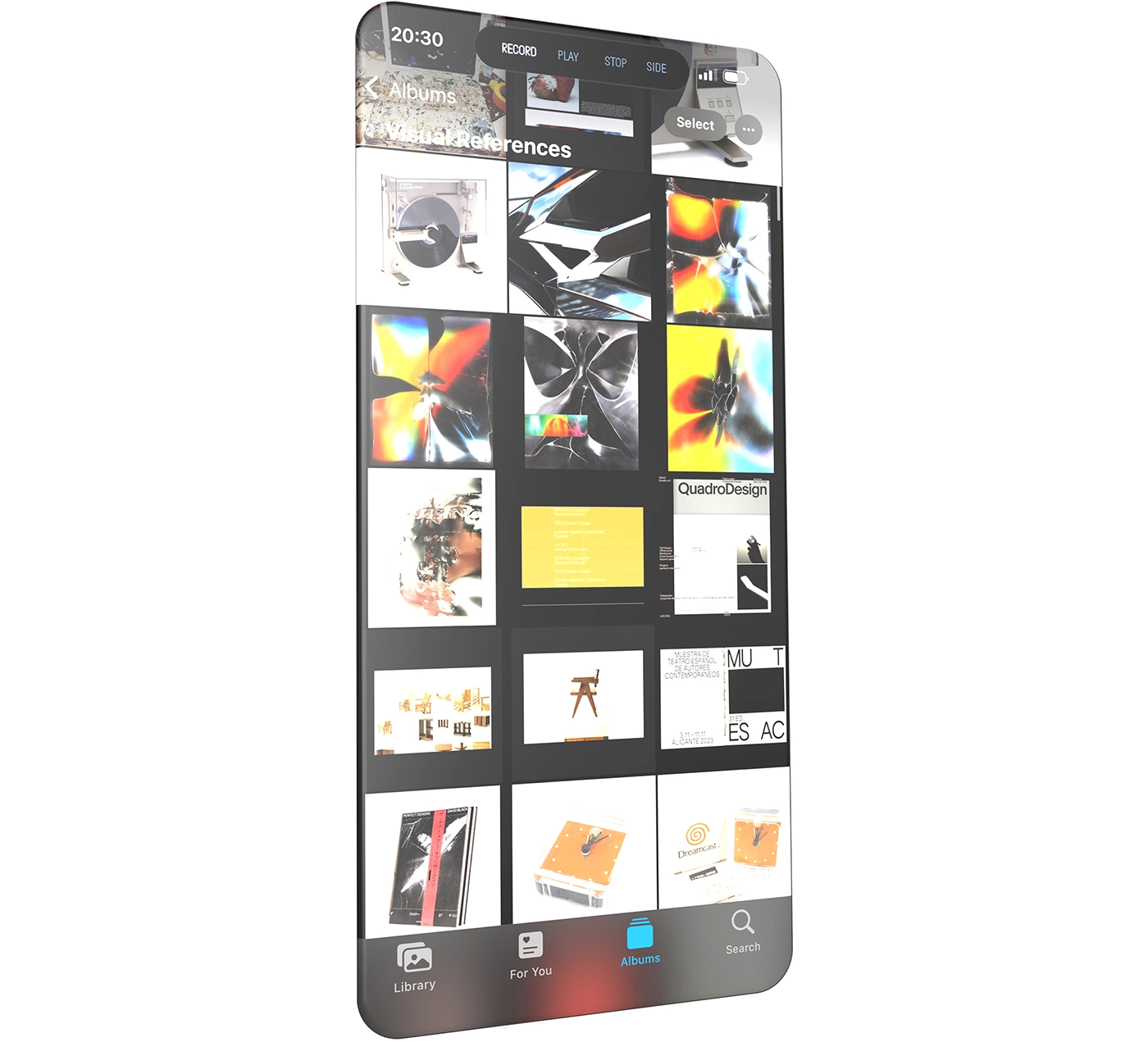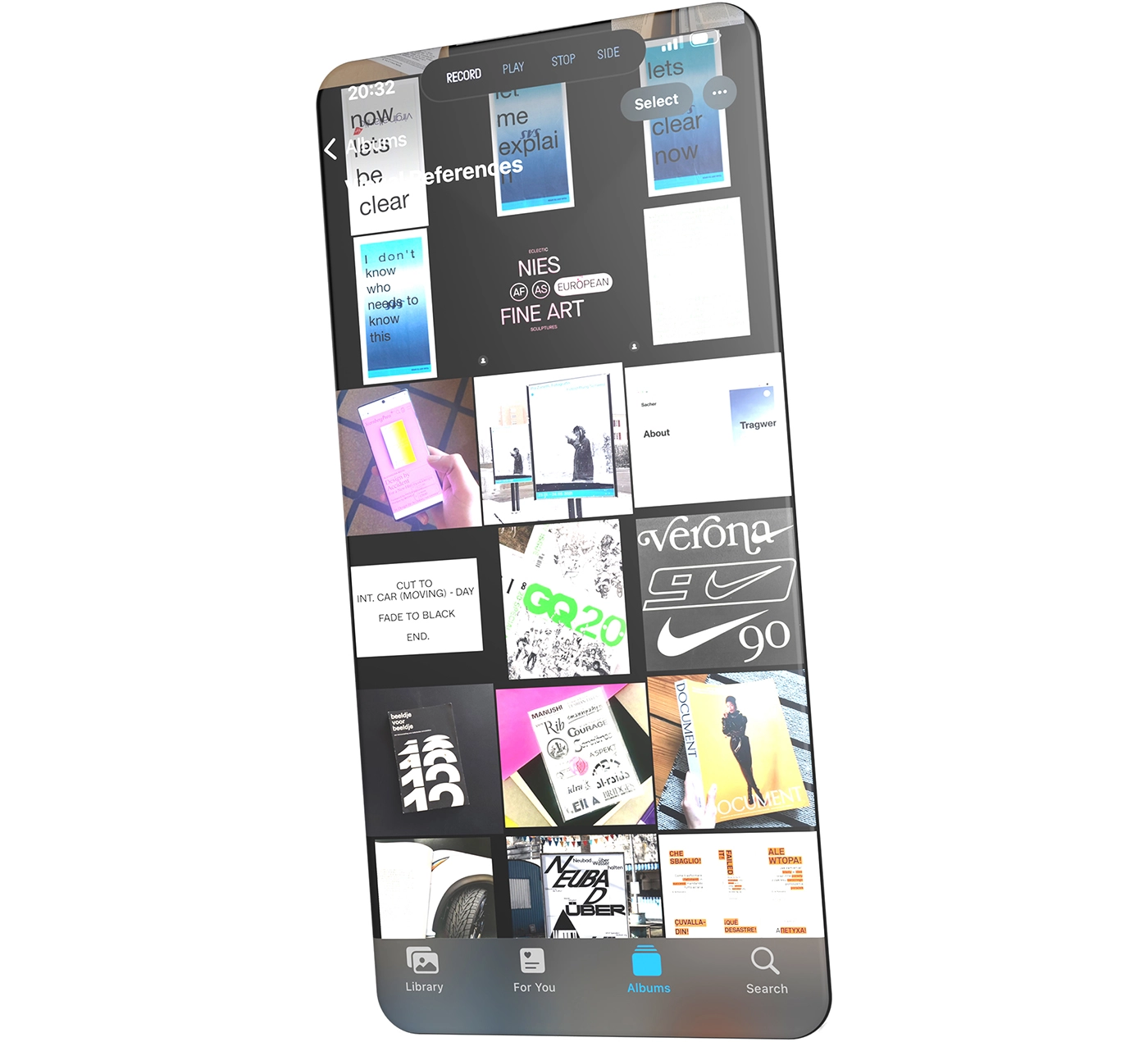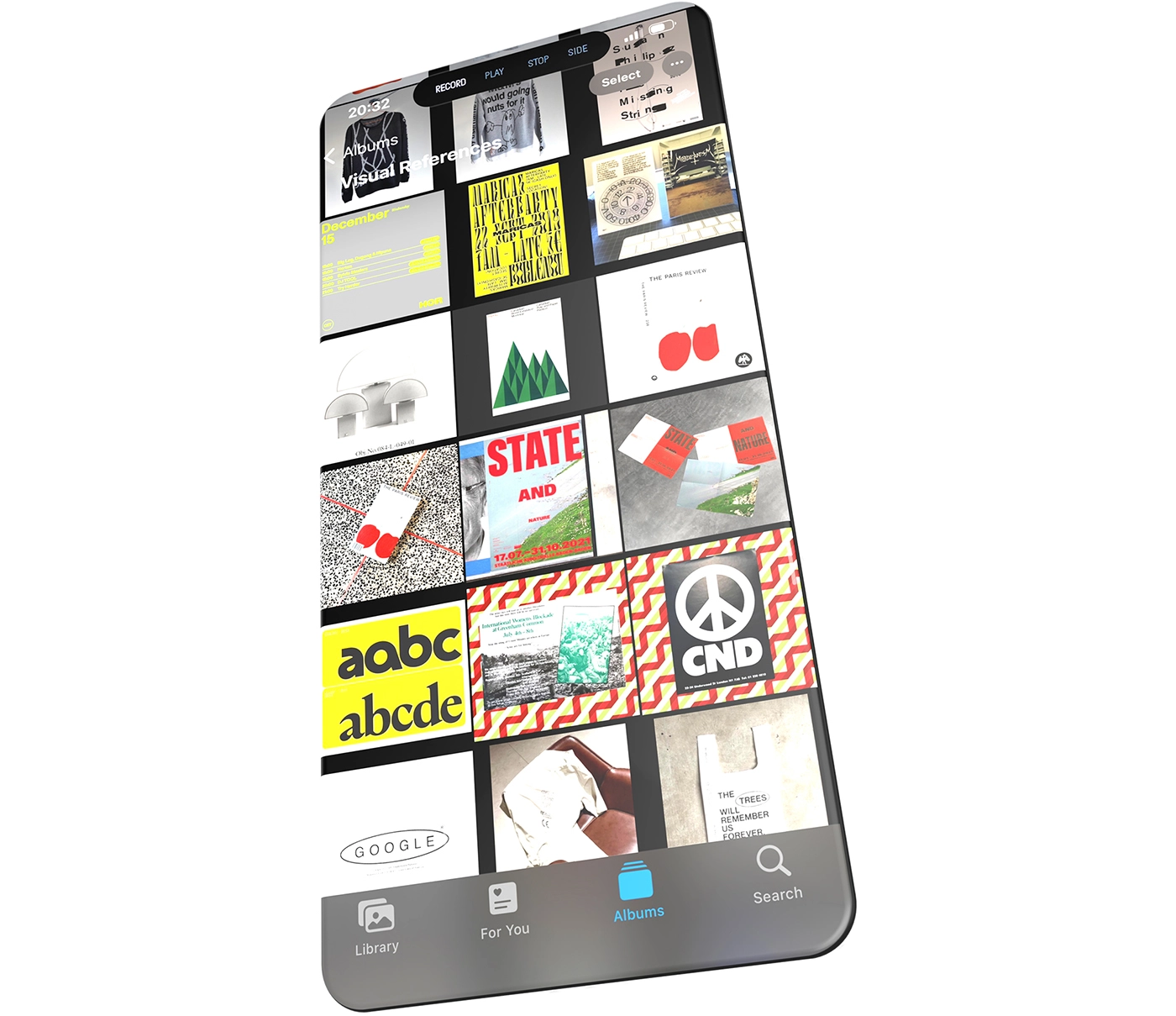Screenshot archives as
part of a design practice
I take endless photographs of design, interfaces and typography with my phone. Good, bad, accidental avant-garde collisions. I guess I like to remember things that provoke my imagination.
Even more than that, I screenshot a lot of design work from the internet and social media. Historical archival pieces, new portfolio pieces, glitching interfaces, music video stills. It all goes in there.
At the end of each week I sort through these images. I get rid of the less interesting ones, I crop, tidy, straighten them, then add them to a folder in my Photos library.
So wherever I am (and as long as I have my phone and a decent internet connection) I’ve got access to a reference library of thousands of images, built up over many years, that I think are beautiful or provocative.
When I’m discussing or starting a project, within a few taps I can send a handful of relevant images to a Miro board, office printer or email and get the discussion moving with some lightweight moodboarding.

Lots of my time at art school was spent discussing, exploring and battling against ideas of curation. The post-modern idea that the meaning of something comes as much from the context in which you experience it as the thing itself.
As a creator, dealing with this lack of control over the meaning of your work is terrifying. Although most of us eventually get over it, and even start to enjoy it.
As a screenshot collector, the complete lack of context within an image folder opens up a different meaning. The curatorial context of these images is you. The time stamped flow of images become a diary of your interests and tastes over time, usually in response or reaction to the rest of your life; the images I collected when embedded in public service work are very different to the images I have collected when thinking about computer vision. But there’s also a tonal and aesthetic consistency that runs through it all. My own taste.

In earlier stages of the internet lots of us shared our collections of stuff online, across platforms like Tumblr, Flickr, FFFFound!, Instagram, Svpply and blogs. But then the algorithms came and fragmented it all, atomising each image into content to be recombined according to some maths.
I don’t really mind. I get it. It seems to make them money. But separating the images from both the creators intent and any curatorial intent leaves it all a bit meaningless to me. I’m sure I’ll carry on sharing my own work and being a consumer of these platforms, but I don’t feel a need to share my collections on them any more.

I’ve collected hundreds of books on culture, art and design over the years. I have storage boxes of inspiring work that I have picked up, studied and kept hold of. Now it all lives buried at the back of what has become my toddler’s bedroom.
One day I’ll have access to it all again I’m sure, but at the moment I don’t. I’m actually fine with that. It is what it is.
But even if that wasn’t the case, it’s not as if I can carry them all around to clients during my work day. And what designer in London 2024 can afford to pay for their own workspace with enough space for bookshelves? Anyway, I’ve learned that being able to keep up the flow and excitement with collaborators is more important than spending time hunting through books for that one reference image.

So instead, my design archiving practice lives on my phone. Each week I spend time tending it, familiarising myself with the things that inspire me.
Years ago I read an interview with Virgil Abloh where he was asked about his working processes, what his studio looked like. He responded with “My iPhone is my office. As long as my phone has battery power, I can continue to work and produce whatever I want and need.”
I laughed about it back then.
Every so often now I laugh about the idea of training a generative AI on my screenshots folder.
If you want to chat more about stuff like this, send me an email or get in touch on Twitter.
You can pretend it's 2005 and subscribe to my RSS feed